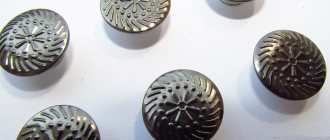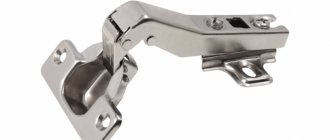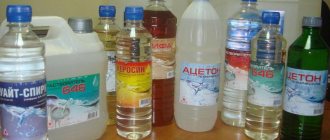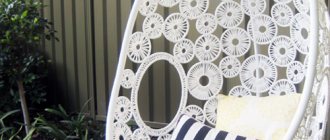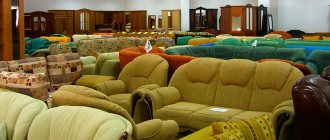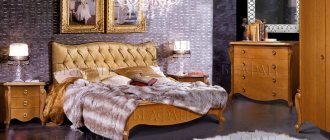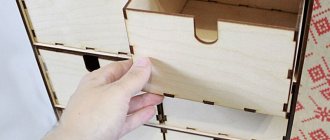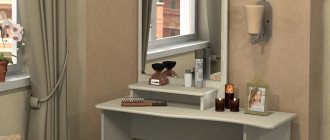Paint is one of the most popular finishing materials. Enamel is the most popular of its “competitors”. Its popularity is due to its ease of use and pleasant appearance after completion of the work - it produces a beautiful glossy surface, in addition, the cost of this material is quite low. In order for a surface finished in this way to last as long as possible, it is necessary to choose the right paint.
Basic composition of enamel paints
Enamels are a type of paint and varnish finishing materials. They consist of pigments combined with special solvents. The presence of varnish components turns the enamel into a suspension that evaporates in air.
- Residual pigments and resins harden when applied to surfaces.
- When dry, the paint layer forms a continuous, opaque film, which can have different textures, depending on the type of paint.
- After the solvent evaporates, the polyvinyl chloride, nitrocellulose or other types of resins present in the enamels become hard.
- The concentration of binders has a decisive influence on the composite properties of enamels and this becomes the main sign of how enamels differ.
The drying time for paints and varnishes after application is 3 hours or more, depending on the type.
What does the marking PF-115 mean?
Well known to professional builders and owners of private houses, PF-115 enamel appeared on the market back in the 60s of the last century. Until now, it remains one of the most practical paints for various types of repair and construction work. The paint owes such durability not only to its low price, but also to a number of unique consumer qualities.
The paint has been produced virtually unchanged since the day it was first introduced to the market. Its composition is regulated by GOST 6465-76. If you want to use the classic PF 115, then buy paint made according to GOST. Many manufacturers make changes to the chemical composition and produce paint according to specifications. It is very difficult to guess whether its properties have been improved or worsened; it can only be verified experimentally. But there is not always time to do this, and not everyone can afford to buy paint, even inexpensive, for experiments.
The name PF 115 encodes the chemical composition and main areas of application. The index is understandable to a specialist, but does not mean anything to the average buyer. However, the information is very important.
The letter symbol PF indicates that the paint binder is pentaphthalic varnish (a type of alkyd resin). The scope of application of pentaphthalic paints is external and internal work on a wide range of materials.
The numbers 115 indicate the scope of application:
- 1 - for outdoor work in various climatic conditions;
- 15 - chemical composition number, determined by GOST and deciphered by the manufacturer.
According to its physical state, PF-115 paint is a suspension, a suspension of solid and liquid particles of various kinds in a liquid medium. The particles are represented by solvents, dyes, pigments, drier, titanium dioxide and other fillers. The base is a fairly viscous pentaphthalic varnish, which is dissolved with white spirit or other organic liquids.
Alkyd enamel
The properties of this inexpensive and reliable paint make it one of the most popular finishing materials. Almost all alkyd enamel paints have many advantages over others.
They are easy to apply to any surface, dry quickly, are elastic and durable. They are successfully used in rooms where high humidity is constantly present, such as kitchens, bathrooms, toilets, bathhouses and swimming pool structures.
The paint can has a special designation, for example, PF-137, where the first number indicates the purpose:
- 1 – for work outside;
- 2 – for painting interior spaces;
- And the next two are about the color number in the color catalog.
How to choose?
When purchasing an enamel paint product, you should pay attention to some details that are important and will help you make your choice.
- You should carefully examine the jar from all sides. There should be no dents or other damage on it. If the seal is broken, the internal composition may lose its characteristics.
- You also need to look at the expiration date, since old paint will not give the desired effect.
- You should look for the inscription “GOST” on the jar: this will guarantee the high quality of the product.
It is recommended to pay attention to the code of the paint and varnish material; it is indicated in large letters and numbers on the front side of the package. One of the best domestic manufacturers is, producing coatings of any type
A wide palette is represented by paints of any color (white, red, black, green, yellow, dark blue tones are especially in demand)
One of the best domestic manufacturers is, producing coatings of any type. A wide palette is represented by paints of any color (white, red, black, green, yellow, and dark blue tones are especially in demand).
Polyurethane enamels
Inexpensive and common paints, widely used in public buildings for painting rooms that are subject to a high degree of wear and tear. For example, in educational institutions they always paint panels and floors.
They are highly durable but take about 24 hours to dry until completely cured. When working with these paints on a large area, it is necessary to use personal protective equipment against toxic fumes and not leave the room closed.
Wet abrasion class
This parameter means the coating’s resistance to mechanical stress using water (when washing). The wet abrasion class indicates the thickness of the washed layer with a certain number of brush passes and is designated according to the DIN EN 13300 system (Europe).
There are 5 classes of wash resistance:
- 1 – the thickness of the washed-out layer is less than 5 microns with 200 brush passes;
- 2 – the thickness of the washed-out layer is in the range of 5-20 microns with 200 brush passes;
- 3 – the thickness of the washed off layer is in the range of 20-70 microns with 200 brush passes;
- 4 – the thickness of the washed-out layer does not exceed 70 microns with 40 brush passes;
- 5 – the thickness of the washed layer is equal to or exceeds 70 microns with 40 brush passes.
Paints of classes 1 and 2 have high abrasion resistance, paints of class 3 have medium resistance, paints of classes 4 and 5 have low resistance.
Information about the paint belonging to the corresponding class is indicated on the packaging. The higher the class, the more expensive the products. You should choose paint based on this parameter taking into account the characteristics of the room. In most cases, it is advisable to purchase paint of at least class 3, but for the bedroom and other rooms with low traffic levels, products of classes 4 and 5 are suitable.
Nitro-enamel paints
The famous paints in aerosol cans are sprayed using a spray gun or an airbrush. This method of application is due to the fact that nitro enamel dries quickly and any painting tools can ruin the surface by brushing across a layer of paint that has had time to harden.
For high-quality metal painting, the surface must be degreased for better compatibility of the coating with the base. They are used mainly for painting metal or wood, as well as for popular graffiti style painting.
general description
As a rule, enamel is a composition that contains a large amount of film-forming agent and a small amount of filler. The first ingredient is synthetic varnish, while the filler is highly decorative. Enamels are intended for the formation of top layers of coating, which are subject to different and high requirements for resistance to negative factors and decorativeness. These mixtures are intended for painting metal and wooden surfaces, as well as for giving them weather resistance and wear resistance. Compositions may have different colors.
Acrylic enamels
Acrylic enamel paint occupies a special place among the varieties of finishing materials. It is produced on the basis of water-soluble, dispersed substances and latex.
Polymer acrylic paints can be applied to surfaces of any quality, you just need to sand and clean them to the desired degree of smoothness.
Recommendations for performing work
The technology for painting ceilings with enamel involves preparing the surface at the first stage. The decorative coating is removed from the base, which is true for paint, plaster or wallpaper. Significant irregularities are filled with putty, as are interpanel seams. To decorate cracks, it is better to use cement paste. Excess solution is removed with a spatula. If leveling will be carried out with plaster, then you first need to apply a primer, then a leveling layer, and after it dries, another layer of primer for painting.
Before applying paint to the plaster, you need to make sure that the surface is absolutely flat, and remove small irregularities with sandpaper.
For work, you can use water-based paint, which can be white or tinted in any shade. First, the composition is diluted in a small amount and tested on a piece of plywood to understand what color the enamel is. Then you can apply it to the entire surface of the ceiling. You can use different tools for this, for example, a roller or spray. In the latter case, the process will go faster, but the technology is used only if there are no pieces of furniture in the room.
Attention! Before you paint the ceiling, you will need to select an enamel roller. The latter may have an aggressive composition, for which artificial pile materials are suitable. When purchasing a mixture based on acrylic or latex, you will have to use a roller, the working part of which consists of polyamide or polyester.
The choice of enamel for the facade and features of its use
The facade should be painted with enamel, which will withstand changes in temperature, humidity and mechanical stress. Among the most common paints for external walls are:
- silicate;
- cement;
- rubber;
- lime;
- acrylic;
- silicone.
If the facade is made of brick, it is better to cover the walls with acrylic paint, which forms a breathable layer. The enamel is mixed well before application, and a primer is applied to the walls. Painting is carried out in two layers. Between which time is maintained for complete drying.
It is better to use a spray bottle to distribute the material over the surface, but in windy weather this technology can cause increased consumption of enamel. If you choose a roller, you should also purchase a brush to effectively paint hard-to-reach areas.
Powder paint technology
Powder enamel is increasingly used today for painting wood, metal pipes, sports equipment and other things. This uses electrostatic spray technology. The base is pre-prepared to achieve better application quality.
In the process of applying the powder, a special gun is used, which is removed 30 cm from the surface. Before applying paint, the surface is well prepared, be it wooden or metal bases. The durability of the coating, its elasticity and strength depend on this stage.
Painting wood or any other material also involves applying a primer to the surface. The technology is waste-free, environmentally friendly, but requires the use of special equipment. Painting may involve the use of a powder spray booth. The coating can be heat-resistant if special-purpose powder compositions were used in the work. If painting is carried out with a polymer powder mixture, the surface becomes hygroscopic, which means that operation is possible only indoors.
Oil variety of enamel
The soft coating that oil enamel paint creates is created on the basis of the residual fraction from the production of vegetable oils, which is called drying oil. This type of enamels is the most ancient of all the others, since ancient Greek temples were painted with oil paints.
The base made from a natural product takes a long time to dry, within several days. But the quality of the paint is distinguished by its long service life and special, natural beauty, with a slight shine on the surface.
Differences between materials and their compatibility
Terminology and composition
This is what real ceramic enamel looks like.
Enamel paints are a narrow segment of paint and varnish coatings that are highly durable and consist of a dispersion of pigments, fillers and various additives in a film-forming substance, the role of which is most often played by varnish, alkyd resin or other substance with similar physical and chemical properties.
Enamel paint is often applied to batteries.
Oil paints consist of natural, synthetic or combined drying oil, in which all the same pigments, fillers and auxiliary target additives are dispersed. Modern types of oil paints are most often mixed with glyphthalic, pentaphthalic and combined drying oils, as well as oxol drying oil.
Oil-phthalic coating is often called enamel.
Moreover, many manufacturers strive to create the appearance of a rich assortment and assign certain names to their products, based on the qualities that need to be emphasized. So, in order to highlight the strength or special shine of its product, the manufacturer calls it enamel, although this product has nothing to do with enamel as such. Of course, the price increases along with the growth of pathos in the product name.
Example of a polymer product.
The first enamel paints arose after pentaphthalic drying oil began to be modified with alkyd resins, as a result of which a more durable and durable coating appeared on the market. In order to somehow distinguish it from others and focus on increased quality, the material was called enamel, so that everyone would understand that the product is stronger and better than simple paintwork materials.
We can say this: material based on pentaphthalic drying oil is called enamel, and material based on boiled linseed oil (natural drying oil) is called paint. If you look at the labeling of cans, you will notice that often all enamel cans have the index PF (pentaphthalic), and all simple ones have the index MA (oil). There are also primers with the designation GF, which indicates glyphthalic drying oil in the composition.
Drying oil based materials.
Types of enamel paints
To talk about the compatibility of materials, you need to understand what enamel materials exist. Let’s say right away that there are so many of them that it will be problematic to cover them all without exception.
We will name the main ones:
- Nitrocellulose (NC). Consist of cellulose nitrate, pigments, additives and solvents. They are mainly applied to metal, concrete and wooden surfaces. Available in cans and aerosol cans, they are distinguished by the characteristic pungent odor of acetone and are incompatible with other formulations without special preparation;
- Organosilicon (SO). They are applied to almost any coating and material and are characterized by heat resistance, moisture resistance and high wear resistance. Compatible only with cured acrylic coatings;
- Pentaphthalic and glypthalic (PF, GF). They are a type of oil paint based on synthetic and combined drying oils modified with alkyd resins. Compatible with epoxy, alkyd-urethane and acrylic compounds;
- Acrylic (AK). These are water-dispersible polymer latex mixtures that are compatible only with water-soluble materials, but can be applied to old coatings of almost any composition with appropriate processing and preparation;
- Urethane (UR) and alkyd-urethane (AU). High-strength, wear-resistant coatings that can be applied to oil and pentaphthalic bases, and they are also compatible with epoxy compounds.
Table of compatibility of various paints and varnishes with bases and old coatings.
The list can be continued for a long time, but for this it is easier to look at the special material compatibility tables that can be found on our website. An attentive reader could already have found the answer to the question: “Is it possible to paint with oil paint on nitro enamel?” - in no case, since nitrocellulose materials simply curl up in other solvents, and when applied they form bubbles and swell. (See also the article Spray gun for painting: features.)
Don’t be surprised if you see that some sellers classify fire-retardant paints for metal Polistil as enamel, because even Zinga electrically conductive paint is sometimes included in this category.
Enamel paint with glowing effect
To cover various signs on highways and railways, you can often see fluorescent paints that glow when they are hit by headlights or the sun.
- It is also used for applying markings on various signaling transport devices.
- Before painting, the surface is sometimes coated with a phosphorus primer.
- To prevent fading, after the three-layer coating has dried, a protective varnish is applied to the luminous enamel.
Gloss level
The reflectivity of the paint and its durability depend on the degree of gloss. The better the paint reflects light (shine), the more resistant it is to external influences. At the same time, such paint reveals all defects of the painted surface. Therefore, in each specific case, find a balance between these characteristics.
There are 5 levels of paint gloss:
- matte - practically does not reflect light, masks surface imperfections well, but does not tolerate exposure to water;
- semi-matte - weakly reflects light (has a low shine, reminiscent of the shine of an eggshell);
- satin - a compromise option between matte and glossy paints, allowing you to hide surface defects, while forming a fairly durable coating;
- semi-gloss – moderately reflects light and is highly durable;
- glossy - highly reflective, resistant to pollution, considered the most durable and durable. At the same time, gloss reveals all surface defects and is only suitable for painting perfectly smooth substrates.
Special varieties of enamel paints
The best paint manufacturers work to create products with unique qualities. In addition to the fluorescent effect of AS-554 enamel, there is also ML-12 paint, the special properties of which are intended for coating various structures in contact with aggressive environments.
- This coating protects products from destruction for a period of 1 to 5 years.
- It is applied twice to metals or wood after a coat of primer and gives them a renewed and durable look.
- It is also widely used for painting construction equipment operating in desert conditions.
- Paints diluted with varnish that imitate various metals can be bronze, gold or aluminum.
- They perfectly protect coated surfaces from rust and scratches by creating a flexible, semi-gloss layer on concrete, metal and wood surfaces.
Enamel paint XC-759 does an excellent job of protecting structures and equipment from the effects of acids and alkalis. Epoxy resin, vinyl acetate and pigments reliably coat surfaces of various metals with a protective film.
It is so stable that it remains on the walls of tanks and freight cars after they come into contact with very dusty or chemically active cargo.
Enamel can even create a protective layer on the technological equipment of factories, where corrosive gases and mineral salts are involved in the production process.
The most popular manufacturers, review
The most effective enamel paints are products from well-known manufacturers. Among the best companies are the Japanese manufacturer Tamiya, the Irish brand HUMBROL, the English brand Dulux, the German company Caparol, the Danish company Sadolin and the German-Polish joint venture Hansa.
The advantage of these brands is explained simply; they have many years of experience in the production of paints and varnishes. All of the listed manufacturers have products of the highest quality and an excellent reputation.
Russian manufacturers are also actively working to create the highest quality products. The following companies can please customers with their results:
- Belgorod enterprise "Painting paints";
- Yaroslavl production "SpetsEmal";
- St. Petersburg.
The most effective enamel paints are products from well-known manufacturers.
All paints and varnishes have individual technical characteristics. Therefore, in order to choose the most optimal option, you need to familiarize yourself with all the subtleties and nuances of enamels.


